Galeazzo Sanseverino & Milan’s Sovereign Polycule-Threesome
Time to meet one of my favorite Renaissance friends: Galeazzo Sanseverino, a mercenary whom contemporary sources describe as the sexiest thing in pants in Italy, part of the badass polycule threesome that ruled Milan in the early 1490s.
(This is part of my series counting down to the release of my new book Inventing the Renaissance!)
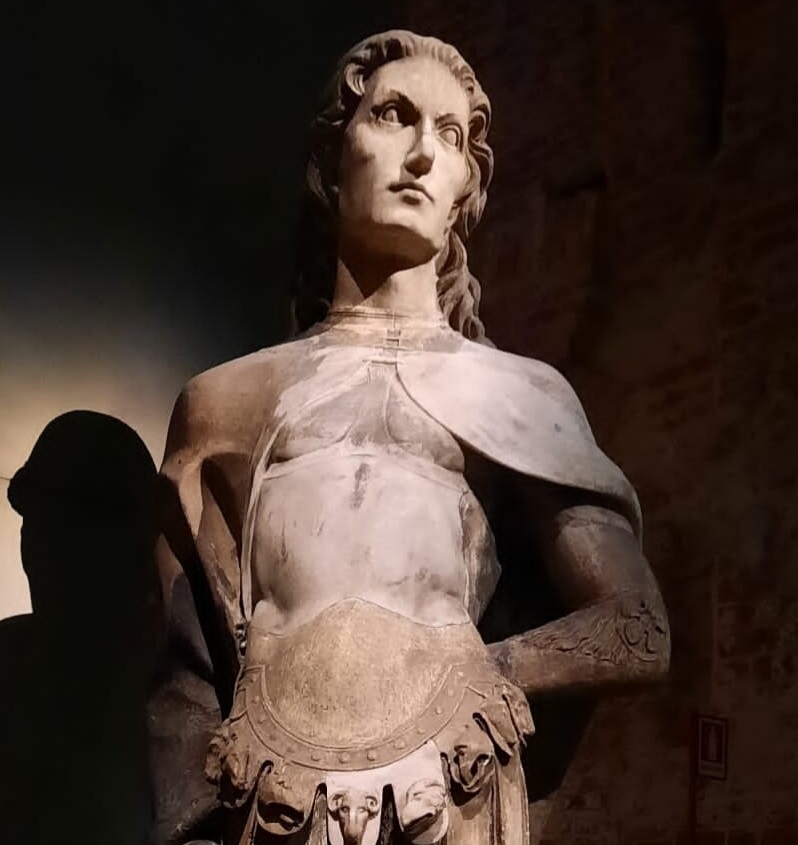
Saint Victor the Martyr (statue in Milan cathedral museum).
Galeazzo was the third son of Roberto Sanseverino d’Aragona, one of the most celebrated mercenary generals of the 1400s, who had fathered 25 children before dying heroically in the Battle of Calliano at the age of 69!
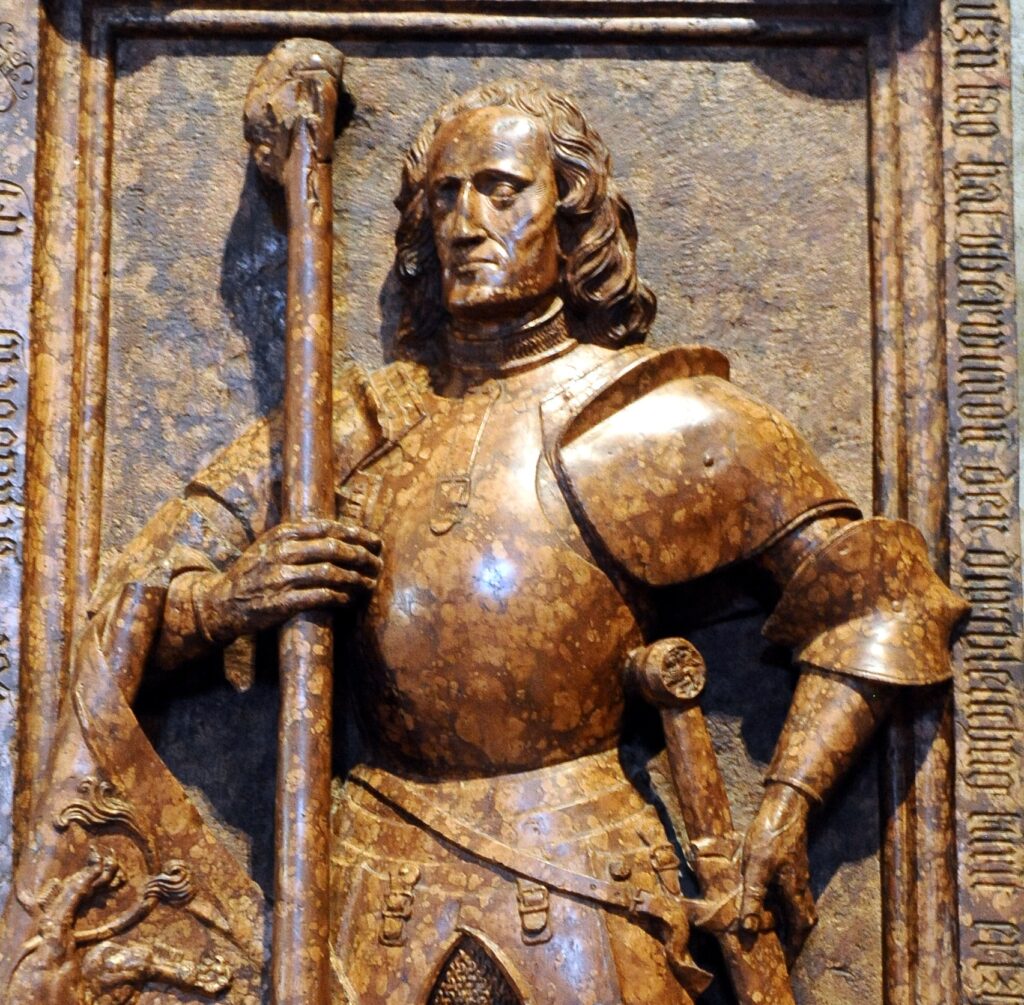
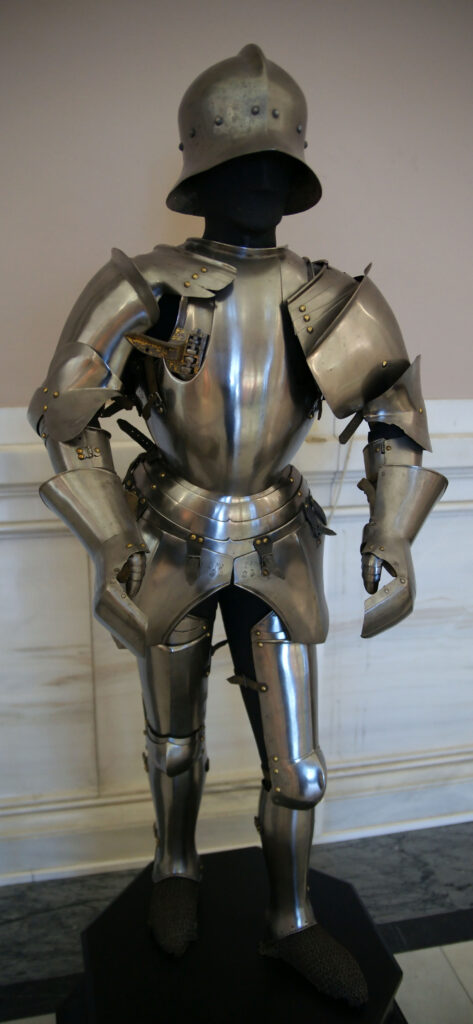
The armor Roberto died in (captured as a trophy) still survives.Roberto’s eldest son Gianfrancesco became a general in the French king’s armies, the second Fracasso the most famous jouster in Europe and a favorite of Emperor Maximilian, and practically all his sons were soldiers, so as #3 Galeazzo had to do a *lot* to stand out. Boy did he succeed!
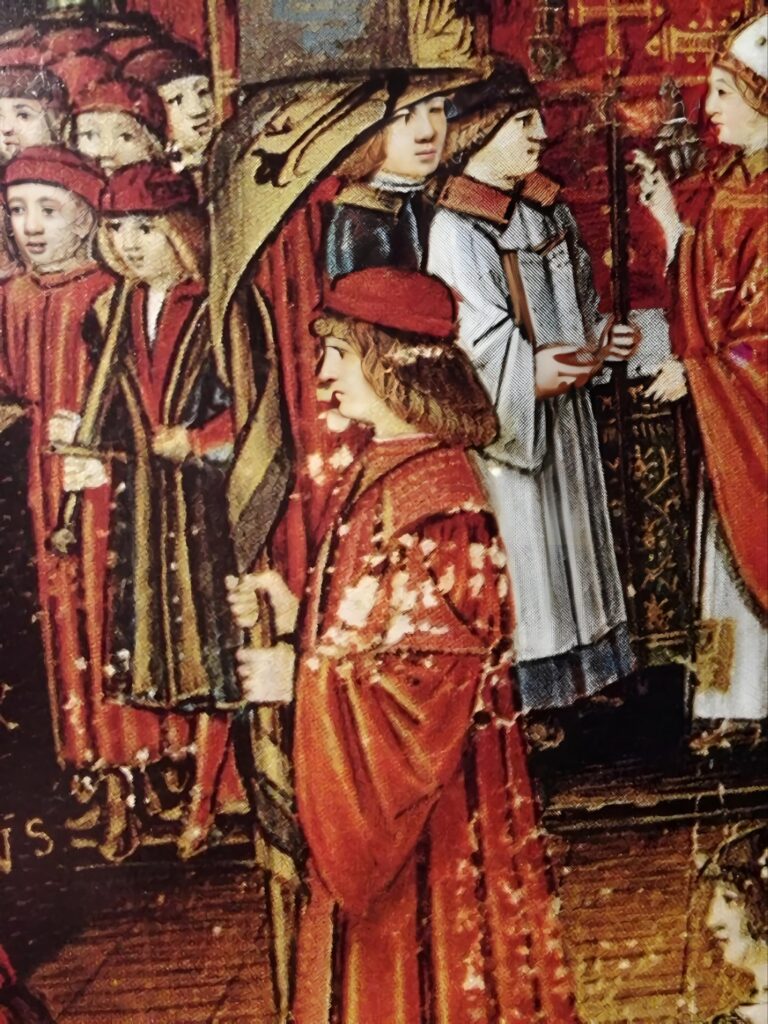
Galeazzo became the favorite lover of Ludovico Visconti-Sforza, who ruled Milan, first as regent then as duke, until his capture by the French in 1499. He made Galeazzo leader of his armies, and trusted him with so much power & sway in the city that people called him “The Second Duke”.
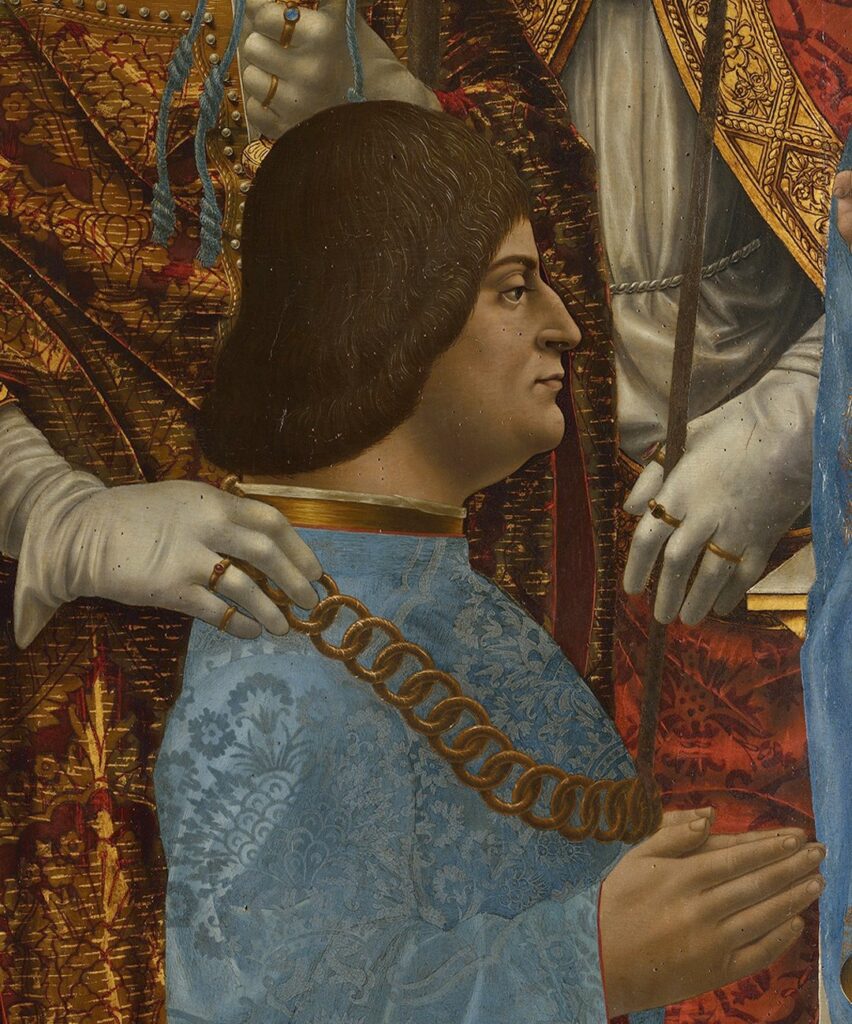
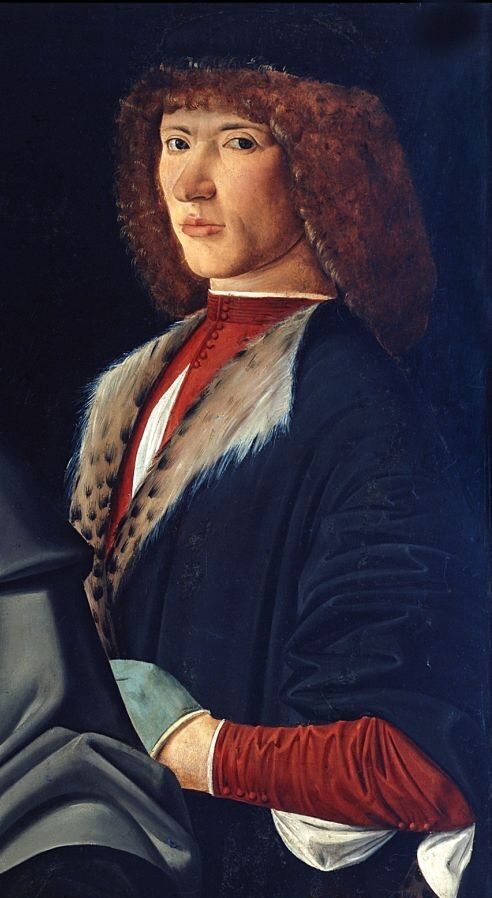
Galeazzo was *also* a beloved favorite of Ludovico’s young wife, Beatrice d’Este–one of the noblest princesses in Italy, sister of the Duke of Ferrara–whom sources say gave Galeazzo access to her private rooms at all hours, reveled in his company, and played croquet with him every afternoon.
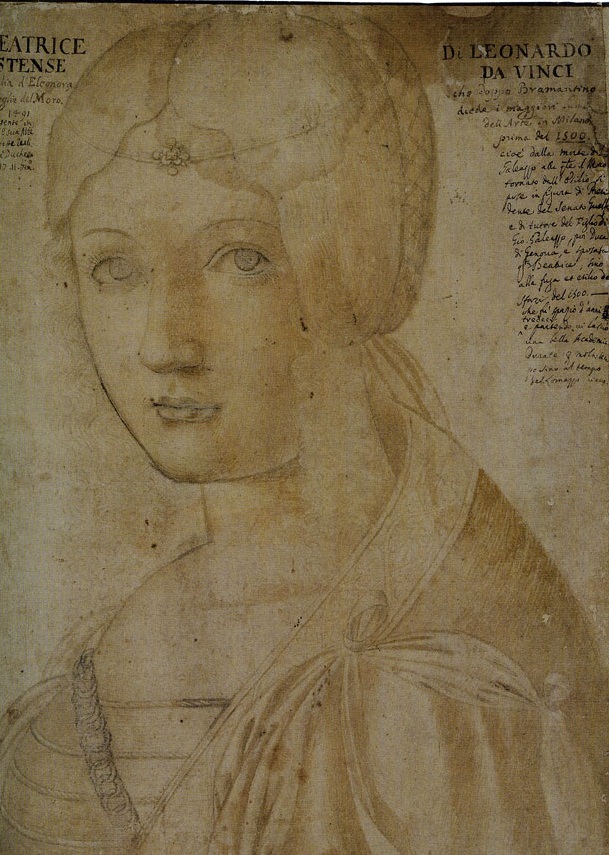
Beatrice had *loathed* her husband’s female lovers, like Cecilia Gallerani immortalized in Leonardo’s famous painting “Lady with an Ermine” but loved Galeazzo, and happily welcomed him as family.
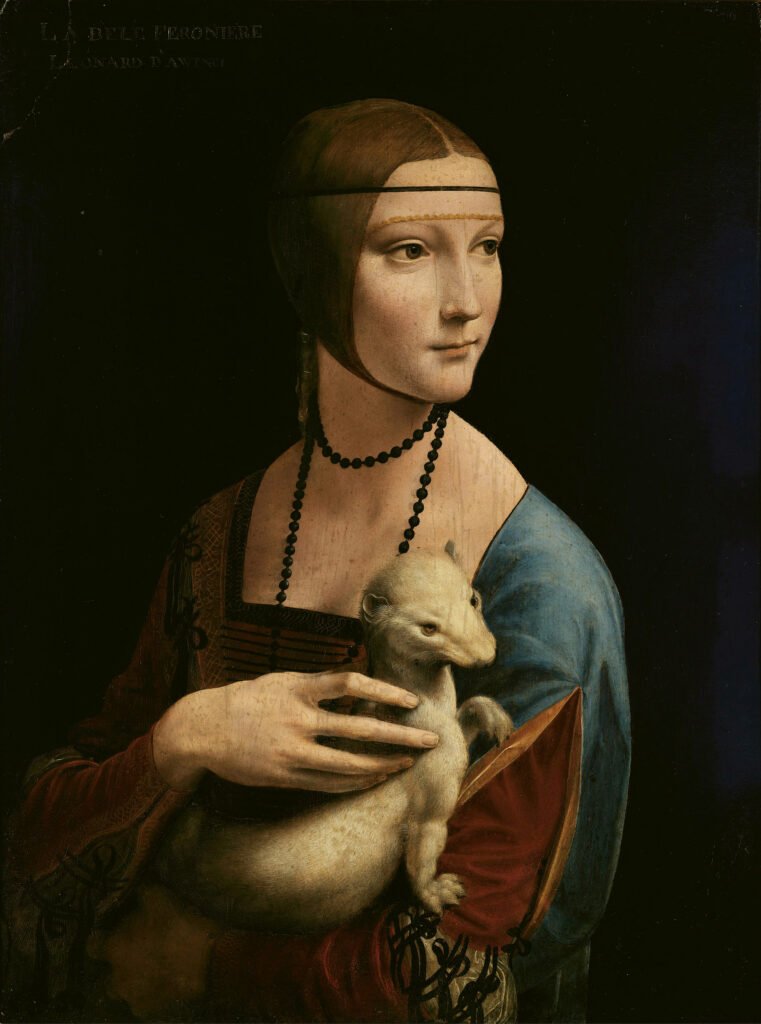
While contemporary sources are very explicit about the openly sexual relationship between Ludovico and Galahad, no sources (even written by enemies) ever suggested any sexual relationship between Galahad and Beatrice despite their intimate friendship and close contact.
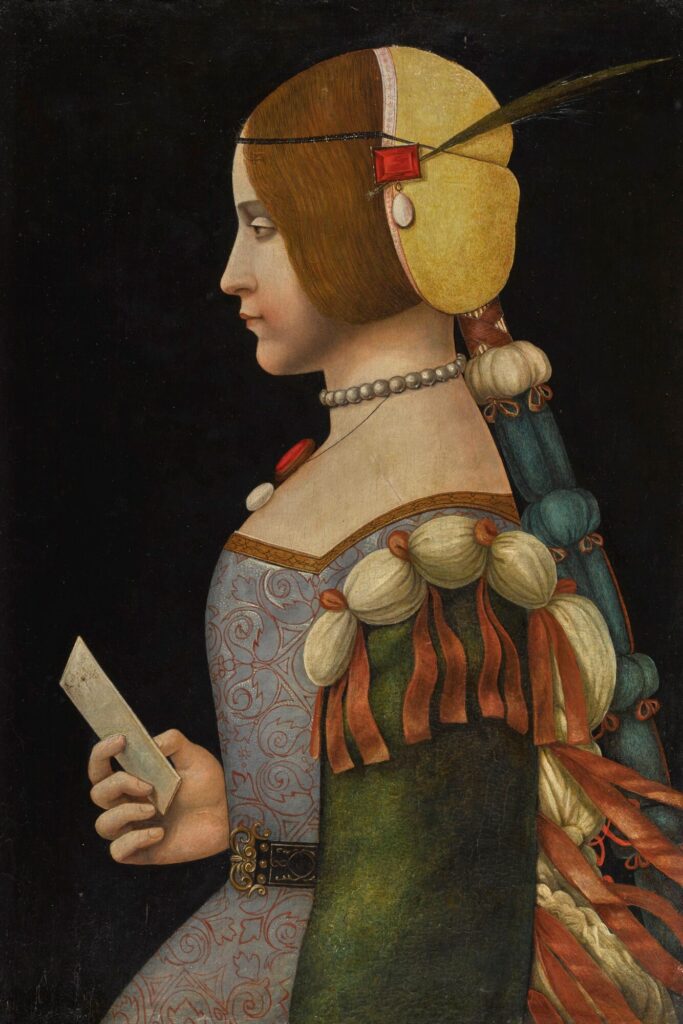
The young duchess *was* very close with her husband’s illegitimate daughter Bianca Giovanna Visconti-Sforza, who was nine when the sixteen-year-old duchess came to Milan in 1491, & became her dear companion/playmate.
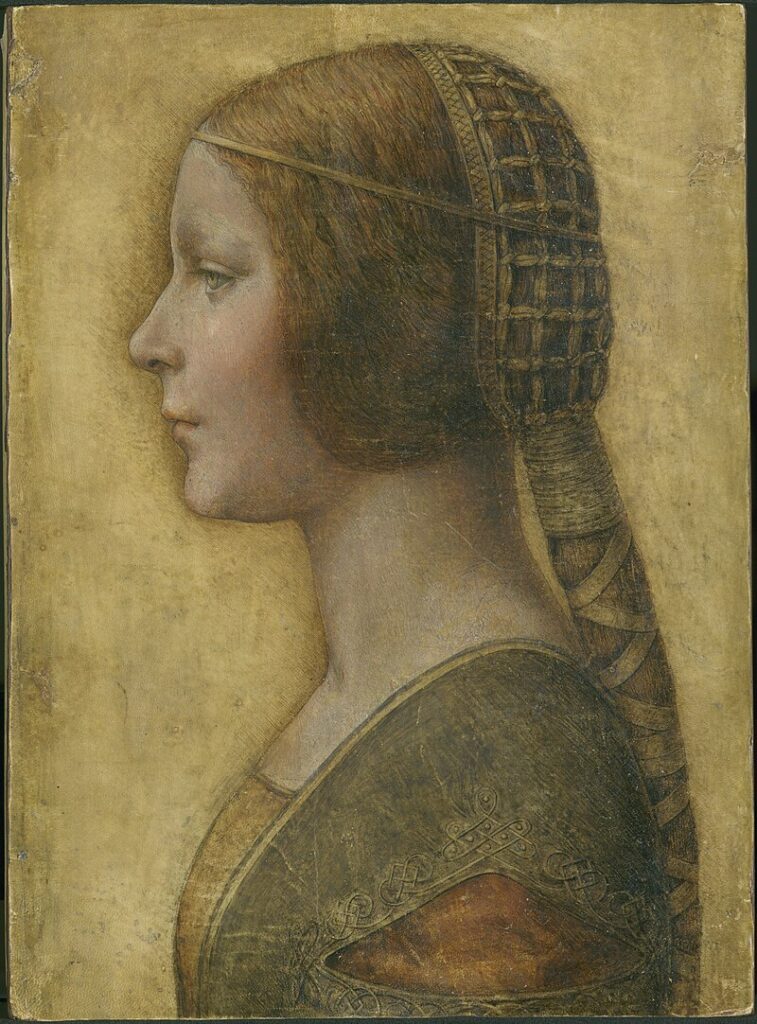
To tie the family together, Ludovico had Galeazzo marry young Bianca Giovanna, making his lover his son-in-law (which is what most histories call him). Accounts describe the very young princess enjoying playing chastely with the husband who treated her more as a stepdaughter than a wife.
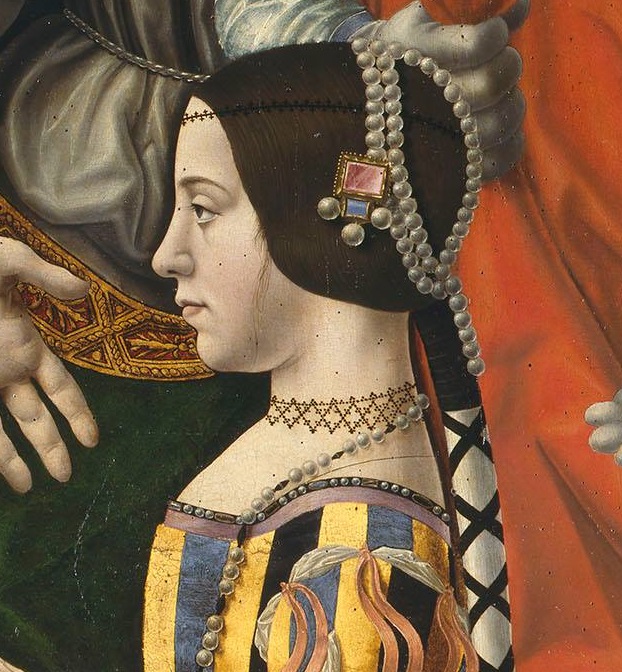
Two sons born to the ducal couple (and doted on by Galeazzo & Bianca) seemed to secure the family’s future, and even when the French invaded in 1494 Duchess Beatrice (shown here as a girl with her sister Isabella d’Este) visited and charmed the French king, securing a (brief) alliance.
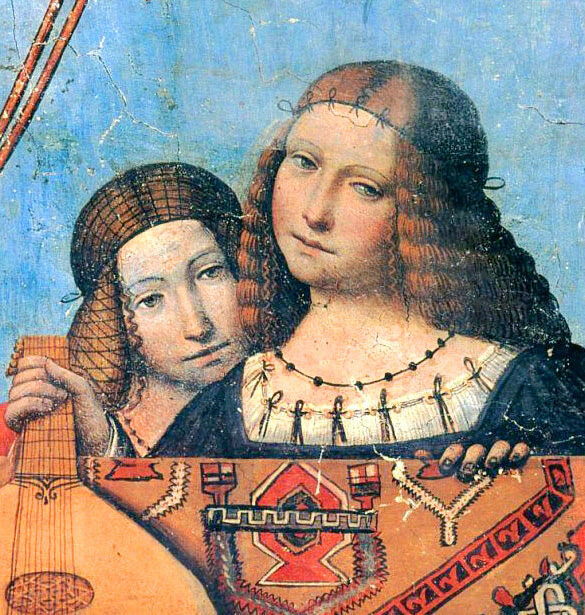

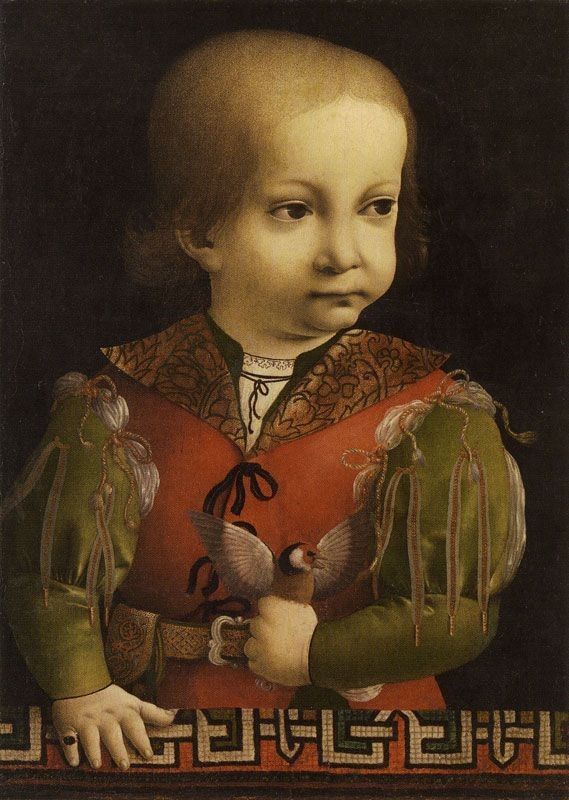
Alas, the joy was not to last. Relations with the French soured, and Bianca died of illness in 1496 (age 14), then Beatrice in childbed the year after (age 22). Ludovico’s mourning was so extreme he locked himself away for 2 weeks, shaved his head, & started wearing only black & a ragged cloak.

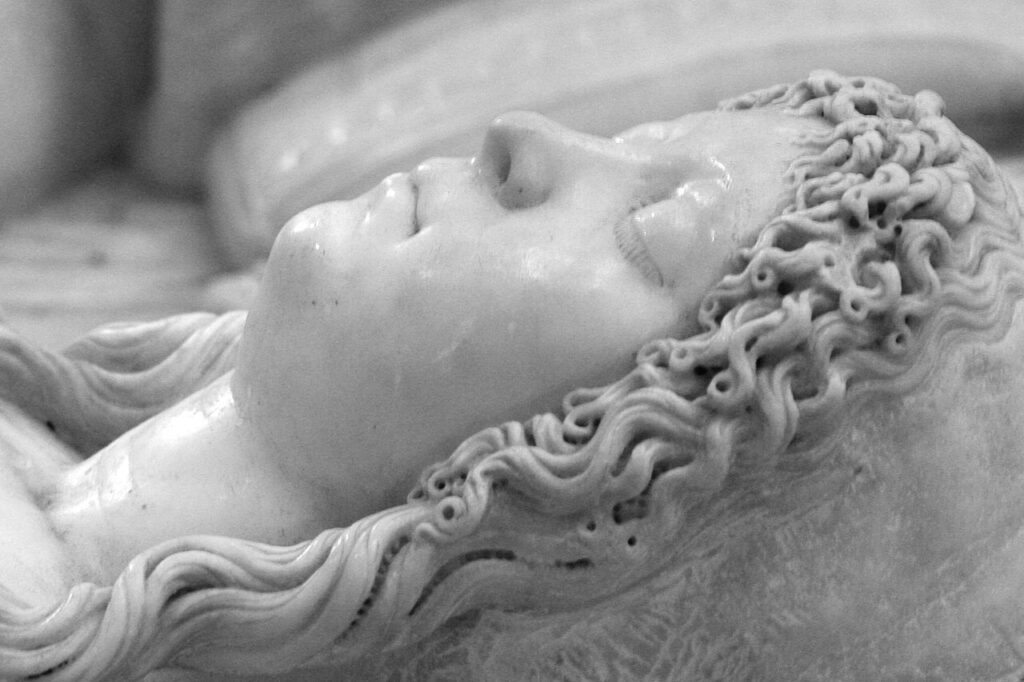
Soon after, amid the wars egged on by many including the ambitious Borgias, the French seized Milan and captured Ludovico, keeping him in an iron cage in which he used to display his high-status prisoners. For a great account of this see John Gangé’s book “Milan Undone“.
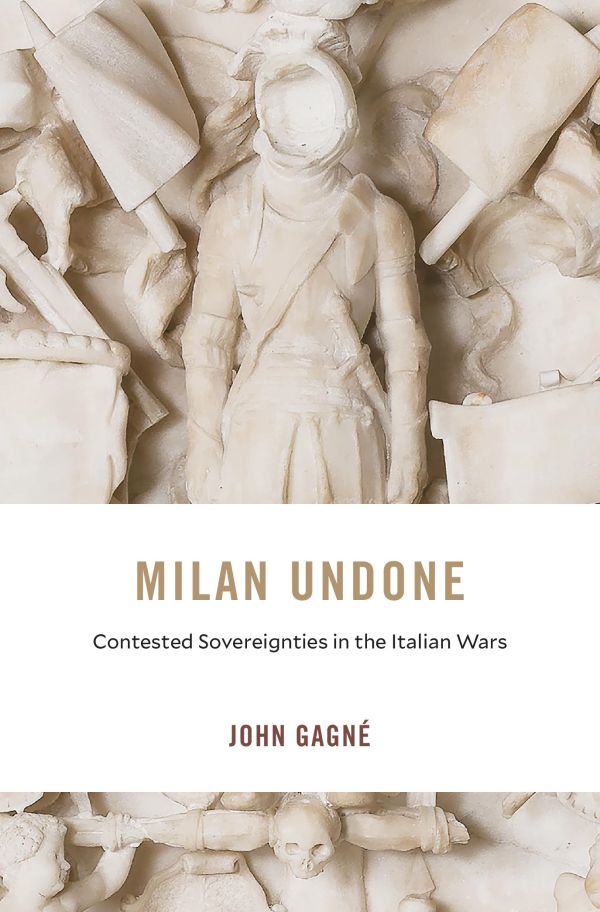
Galeazzo too was captured but charmed the French who let his brothers ransom him be. He went to emperor’s court where, not to be outdone in drama, he wore all black and *dyed his hair black* letting it grow unkempt down to his waist as a token of his grief for Ludovico’s continued imprisonment. It was in this phase that he challenged the ferocious Francesco Gonzaga to a duel (a story that’s now a new post!), but eventually he entered the service of the French King Louis and was still so charming he became the only non-Frenchman to ever receive the title of Royal Chamberlain of France. Ludovico died in his imprisonment in 1508. Galeazzo, long outliving all his dear ones from Milan, died heroically in battle defending France’s next king Francis I in the Battle of Pavia 1525, aged 65.
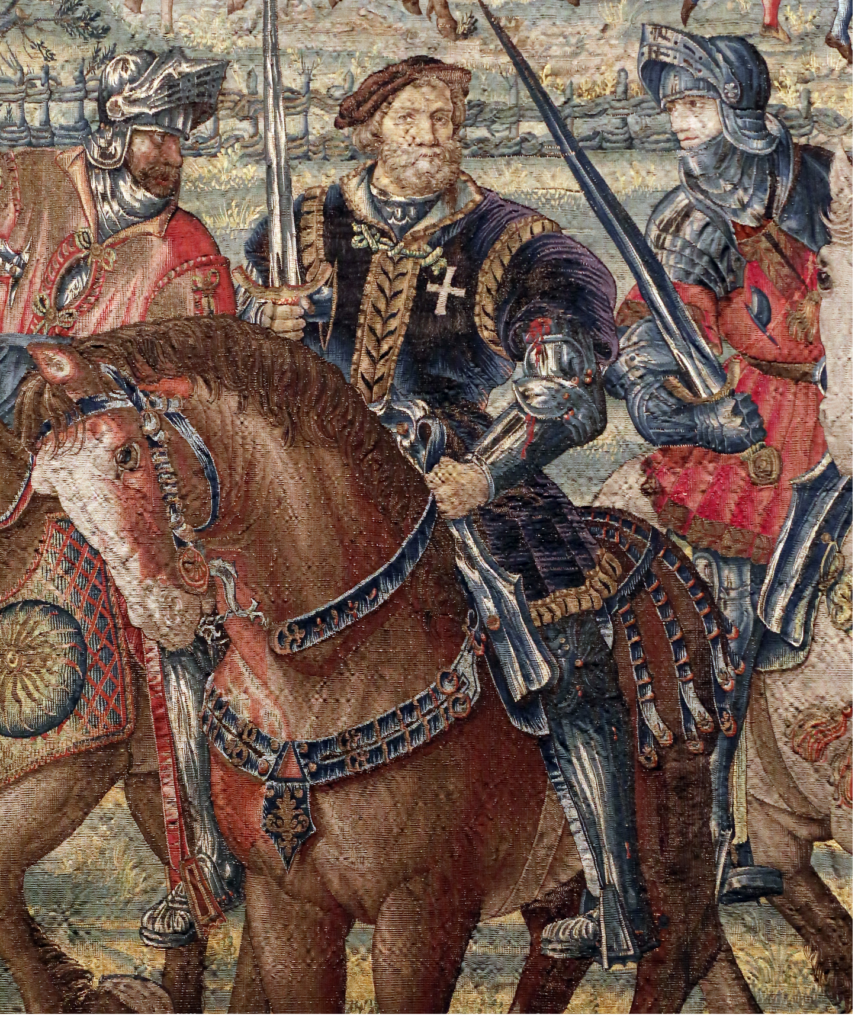
Queer & complex families like this usually get erased in histories, but I love to remember them through this painting by pre-Raphaelite artist Eleanor Fortescue Brickdale, imagining a happy alternate Milan where Beatrice survives & hosts visiting Leonardo da Vinci and (inexplicably) Savonarola.
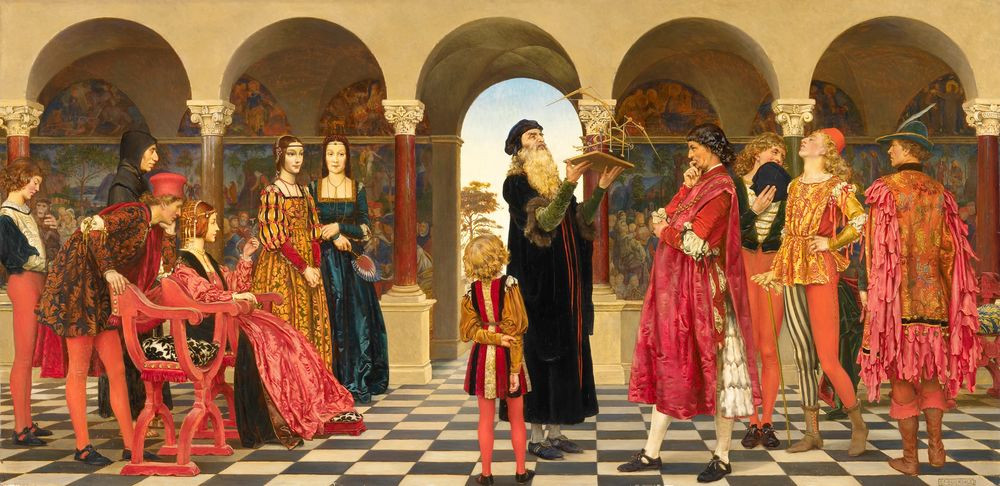
Check out my post on the Gonzaga duel story if you’d like to read more!
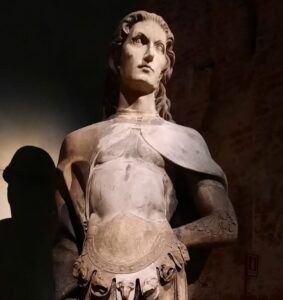
2 Responses to “Galeazzo Sanseverino & Milan’s Sovereign Polycule-Threesome”
-
[…] Galahad Sanseverino & Milan’s Sovereign Polycule-Threesome – Ex Urbe […]
-
[…] posted last time introducing Galeazzo Sanseverino “Son of Fortune”, the famously handsome mercenary captain and lover of Duke Ludovico Visconti-Sforza who held such […]


